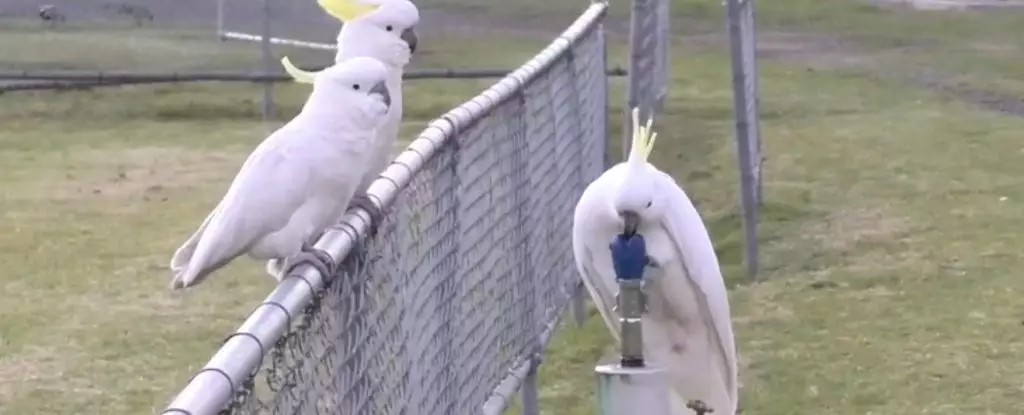In a remarkable display of avian intelligence, sulfur-crested cockatoos in Western Sydney have shown their adaptability by learning how to operate park water fountains. Known scientifically as *Cacatua galerita*, these birds are not just charming spectacles in the Australian skyline; they have solidified their reputation as ingenious problem-solvers. Their latest feat: manipulating twist-handle water fountains to quench their thirst. What is particularly astonishing is the dexterity involved in this seemingly straightforward task, which can easily be underestimated by the casual observer.
Evolution of Problem-Solving Skills
A few years ago, these same cockatoos captivated biologists and bird enthusiasts alike with their ability to open wheely bins, showcasing a level of cunning that is rare in the animal kingdom. When attempts were made to thwart their garbage-raiding antics, these clever birds swiftly adapted their strategies, demonstrating an innate resilience that speaks volumes about their cognitive abilities. Such behavior illustrates a key principle of animal intelligence: the capacity to learn from experience and adapt to new challenges, which further enhances their survival skills in varying environments.
A Study in Social Learning
In response to the astonishing behavior witnessed by locals, a research team led by Barbara Klump from the Max Planck Institute of Animal Behavior meticulously monitored these cockatoos using motion-activated cameras over 44 days. The findings were nothing short of impressive: the birds attempted to drink from the fountain 525 times, with a 41 percent success rate, revealing not only their persistence but also their sophisticated approach. Observing them queueing up for drinks at dawn and dusk, one can almost envision a casual social gathering, where these birds demonstrate a complex understanding of social dynamics—waiting for their turn as they would in a human setting.
Theories Behind the Behavior
Interestingly, the researchers posited multiple theories as to why these cockatoos opted for the fountain. One suggestion is that the water tastes superior to other sources, captivating the cockatoos’ discerning palates. Another theory hints at “contrafreeloading,” a behavior wherein animals prefer to work for food or water instead of freely accessing it. Additionally, the heightened visibility and openness of the fountain location may confer safety against predators, which enhances its attractiveness. The social learning aspect cannot be overlooked; it appears that this novel behavior is becoming ingrained in the local cockatoo population, merging individual ingenuity with community tradition.
A Celebration of Nature’s Brilliance
As we witness these charming birds crafting new norms and exhibiting persistent innovation, it is essential to celebrate not only their intelligence but also the intricate relationship they share with their environment. The success of these cockatoos is a reminder that nature continually finds ways to thrive, encouraging us to recognize and appreciate the wonder of wildlife that surrounds us. Such instances invoke a deep-seated admiration for the resilience and adaptability of animal behavior, challenging us to rethink our perspectives on intelligence and creativity within the natural world.

